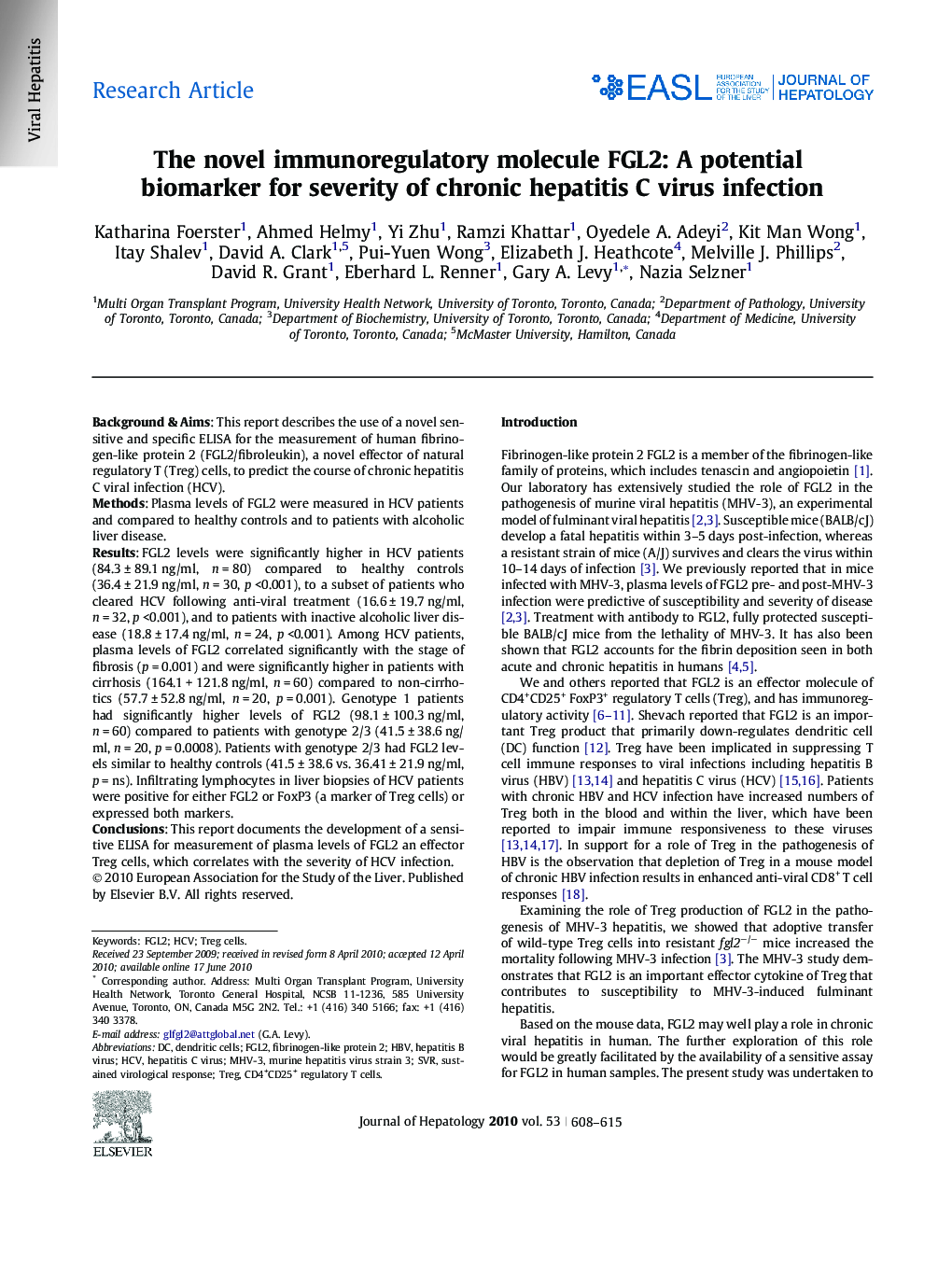| Article ID | Journal | Published Year | Pages | File Type |
|---|---|---|---|---|
| 6108907 | Journal of Hepatology | 2010 | 8 Pages |
Background & AimsThis report describes the use of a novel sensitive and specific ELISA for the measurement of human fibrinogen-like protein 2 (FGL2/fibroleukin), a novel effector of natural regulatory T (Treg) cells, to predict the course of chronic hepatitis C viral infection (HCV).MethodsPlasma levels of FGL2 were measured in HCV patients and compared to healthy controls and to patients with alcoholic liver disease.ResultsFGL2 levels were significantly higher in HCV patients (84.3 ± 89.1 ng/ml, n = 80) compared to healthy controls (36.4 ± 21.9 ng/ml, n = 30, p <0.001), to a subset of patients who cleared HCV following anti-viral treatment (16.6 ± 19.7 ng/ml, n = 32, p <0.001), and to patients with inactive alcoholic liver disease (18.8 ± 17.4 ng/ml, n = 24, p <0.001). Among HCV patients, plasma levels of FGL2 correlated significantly with the stage of fibrosis (p = 0.001) and were significantly higher in patients with cirrhosis (164.1 + 121.8 ng/ml, n = 60) compared to non-cirrhotics (57.7 ± 52.8 ng/ml, n = 20, p = 0.001). Genotype 1 patients had significantly higher levels of FGL2 (98.1 ± 100.3 ng/ml, n = 60) compared to patients with genotype 2/3 (41.5 ± 38.6 ng/ml, n = 20, p = 0.0008). Patients with genotype 2/3 had FGL2 levels similar to healthy controls (41.5 ± 38.6 vs. 36.41 ± 21.9 ng/ml, p = ns). Infiltrating lymphocytes in liver biopsies of HCV patients were positive for either FGL2 or FoxP3 (a marker of Treg cells) or expressed both markers.ConclusionsThis report documents the development of a sensitive ELISA for measurement of plasma levels of FGL2 an effector Treg cells, which correlates with the severity of HCV infection.
